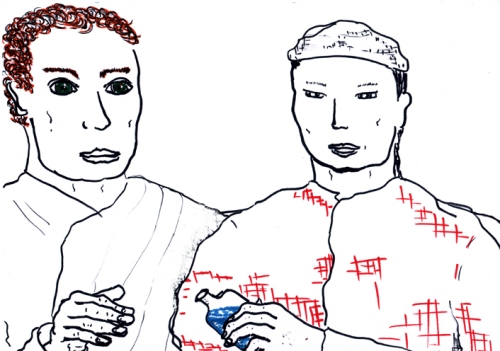In the Prophet’s days, at least at practicable travel distance, the Persian Sassanid empire was the main promotor of science and medicine. The East Roman empire, the Byzantines, was its main enemy and persecutor. Byzantine emperor Zeno had the main Greek scientific centers closed. Its scholars found refuge in the important Persian city of Gondeshapur, Khuzestan. Astronomy, philosophy, medicine, and useful crafts in the Greek tradition, came to flourish. The Persian king ordered Greek and Syriac works to be translated into Pahlavi: The written Iranian language also used at the court. The language lost its common use after about 900 AD and was then preserved by the Zoroastrian clergy. We may state, therefore, that in the Prophet’s days, science was practised in Persia and it relied on Persians and Greeks and their tradition; however, also Indian and Chinese scholars were invited to Gondeshapur. After the Muslim conquest in 638 AD, the academy of Gondashapur survived and persisted its status of institute for higher learning for several centuries. Its hospital was probably the first ever in the Muslim world. Caliph al Ma’mun, however, founded in 832 AD the famous Bayt ul Hikma, the House of Wisdom, Baghdad, which then gradually became the Muslim intellectual center.
Another accusation from non-Muslims is, that Qur’anic verses were copied from known philosophical and scientific works, perhaps in response to people like Harun Yahya and Maurice Bucaille , who stated, that Qur’anic text never contradicts scientific facts. What were the main ideas on science and nature in the early 7th century AD, and did Qur’anic revelations correspond with them? This question has been posed and explored many a time and led to many creative and imaginative answers, that are by no means to be discarded even nowadays. Me, I start the voyage in Greece and travel clockwise to the middle and far east and end in Europe.
Sources & Suggestions for Further Reading:
New York Times: http://query.nytimes.com/gst/fullpage.html?res=950DE3DD173BF934A25751C1A96F948260
NCBI: National Library of Medicine http://www.ncbi.nlm.nih.gov/pubmed/18154434
Wikipedia.org
Harun Yahya, for comparative studies of Quran, Bible and science, http://harunyahya.com/
https://archive.org/details/TheBibletheQuranScienceByDr.mauriceBucaille Open source full text of Maurice Bucaille's book 'The Bible, Qur'an, and Science'.

Comments
Post a Comment